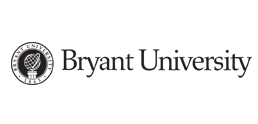Document Type
Thesis
First Faculty Advisor
Brian Blais
Second Faculty Advisor
Richard Smith
Keywords
education; statistics pedagogy
Publisher
Bryant University
Rights Management
CC-BY-SA
Abstract
With the growing role of technology in society, statistics and statistical literacy have become ever more important. In reaction to this, many colleges now require students, regardless of major, to take an introductory statistics course. The intention behind this is to create a workforce of people who are capable of reasoning about statistics. While good intentioned, preliminary research suggests that current statistics curriculum is not effective in instilling the necessary skills to achieve statistical literacy, particularly for students not majoring in a STEM field. For this reason, this thesis looks to empirically evaluate how the disjuncture between teaching statistics and its applications has evolved. Regardless of these findings, another purpose of the research is to find ways to improve upon current statistics courses. Based on preliminary research, the use of Bayesian statistics, which has less confusing language, and visual aids could help to improve learning outcomes.




Comments
This research explores the effectiveness of introductory college statistics courses in helping students to achieve statistical literacy. It identifies potential areas for improvement and notes how this could be achieved through the use of visual aids and Bayesian statistics.